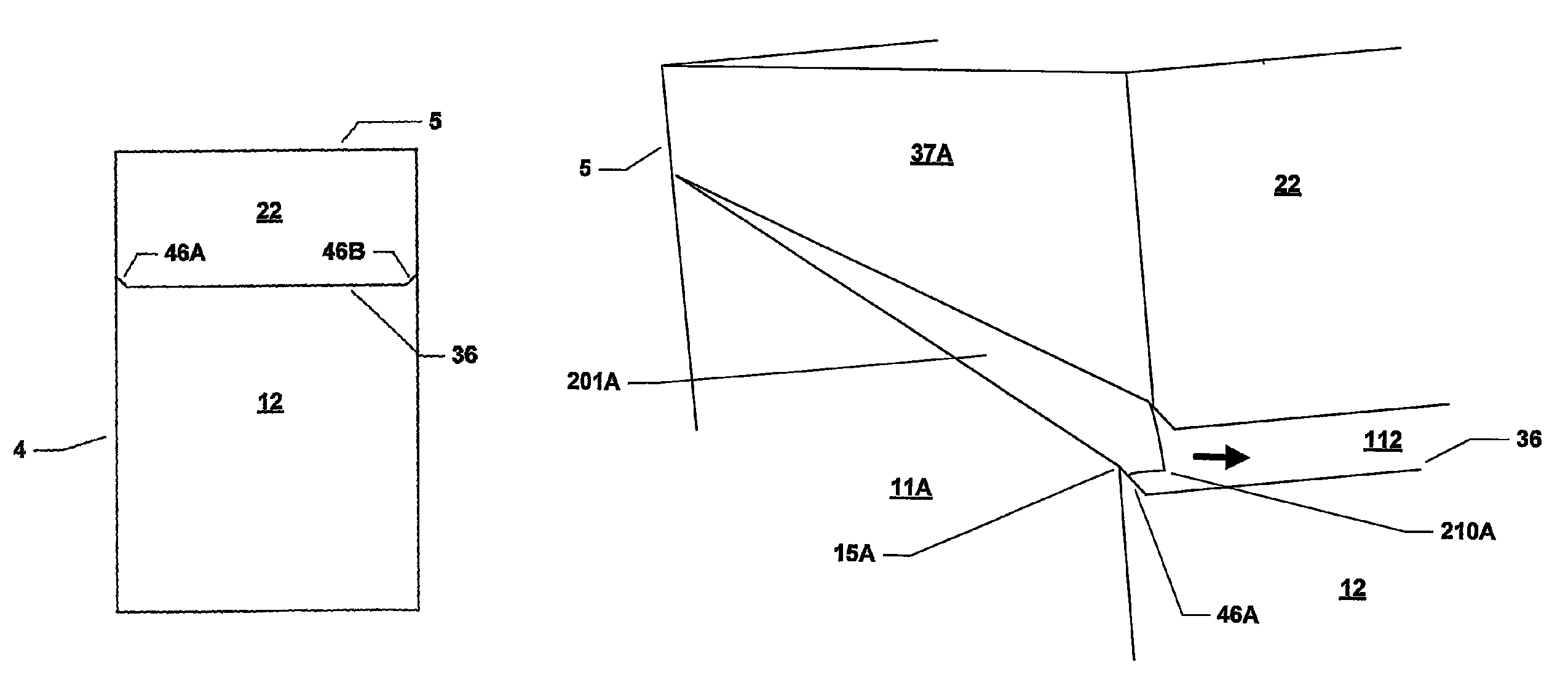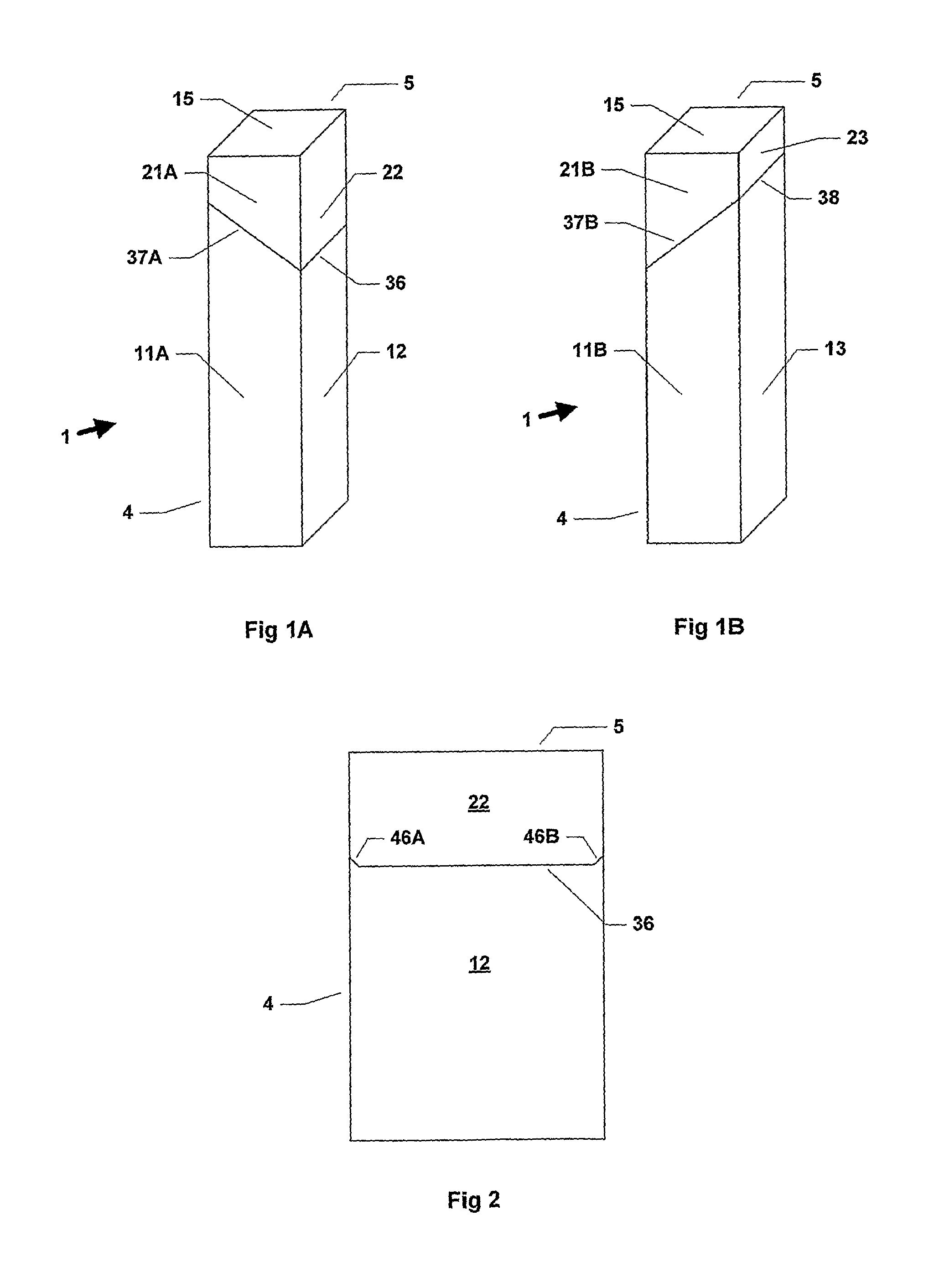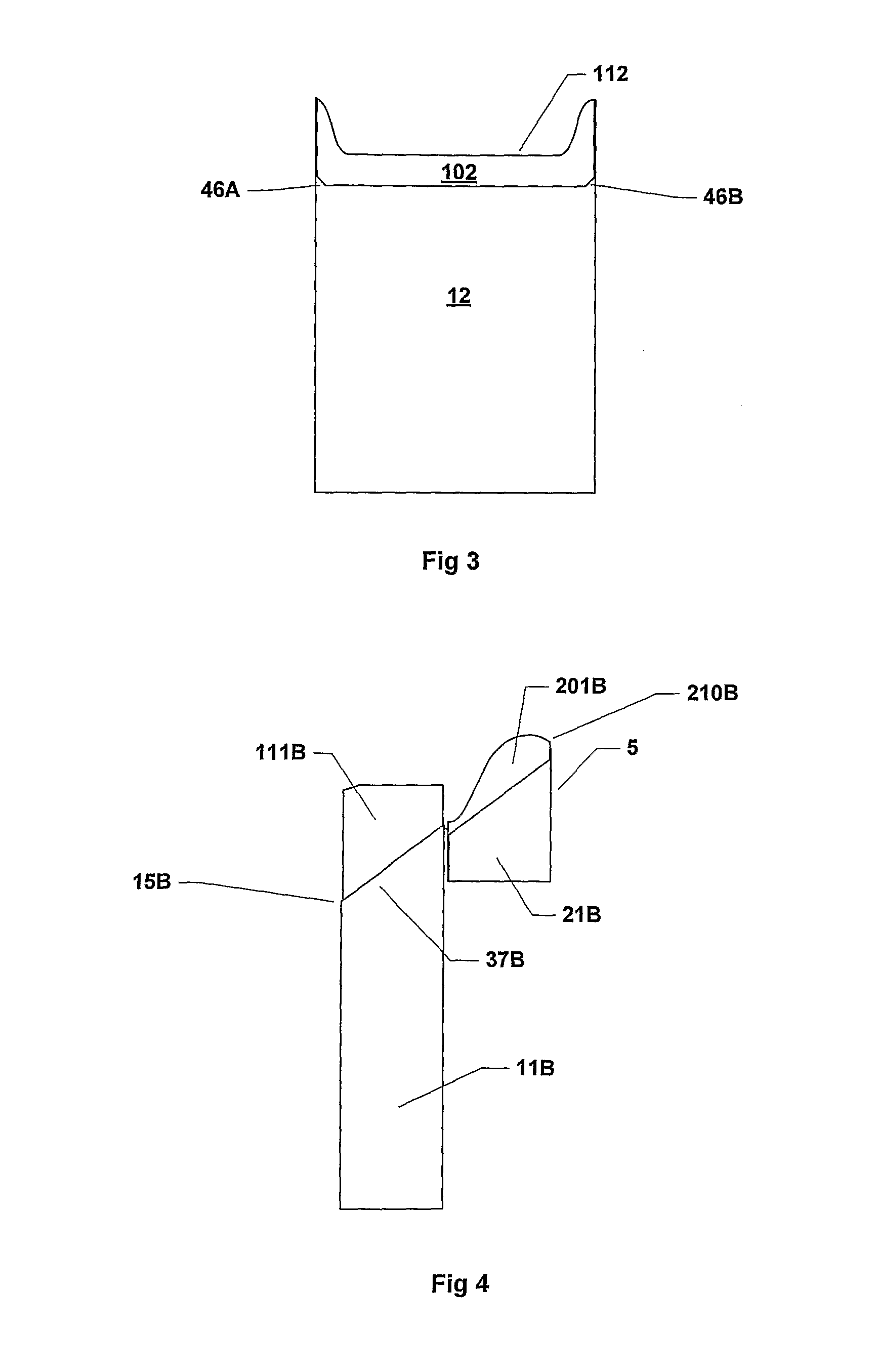Pack for smoking articles
a technology for smoking articles and packaging, applied in the direction of packaging goods types, containers for flexible articles, tobacco, etc., can solve the problems of contents falling out, lids may not always stay completely closed, and lids may not always open completely
- Summary
- Abstract
- Description
- Claims
- Application Information
AI Technical Summary
Benefits of technology
Problems solved by technology
Method used
Image
Examples
Embodiment Construction
[0032]FIGS. 1A and 1B illustrate the general configuration of a hinged-lid (HL) pack 1. The HL pack is generally rectangular in shape and comprises a body portion 4 and a lid portion 5 having a hinged attachment to one another. The body comprises opposing front 12 and back 13 panels, two opposing side panels 11A, 11B, and a bottom panel (not shown in FIGS. 1A and 1B). The lid comprises opposing front 22 and back 23 panels, two opposing side panels 21A, 21B (aligned with body side panels 11A and 11B respectively), and a top panel 15 opposing the bottom panel of the lid. The body back panel 13 and the lid back panel 23 are joined together by a hinge-line 38 which is generally parallel to the bottom of the pack.
[0033]When the pack is closed, the body front panel 12 abuts the lid front panel 22 along line 36, which is generally parallel to the bottom of the pack. The body side panels 11A, 11B abut corresponding lid side panels 21A, 21B along lines 37A and 37B respectively. Hinge line 38...
PUM
 Login to View More
Login to View More Abstract
Description
Claims
Application Information
 Login to View More
Login to View More - R&D
- Intellectual Property
- Life Sciences
- Materials
- Tech Scout
- Unparalleled Data Quality
- Higher Quality Content
- 60% Fewer Hallucinations
Browse by: Latest US Patents, China's latest patents, Technical Efficacy Thesaurus, Application Domain, Technology Topic, Popular Technical Reports.
© 2025 PatSnap. All rights reserved.Legal|Privacy policy|Modern Slavery Act Transparency Statement|Sitemap|About US| Contact US: help@patsnap.com



